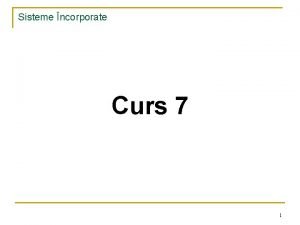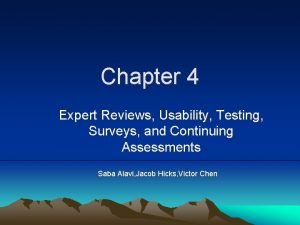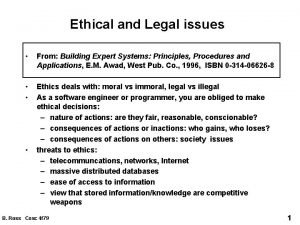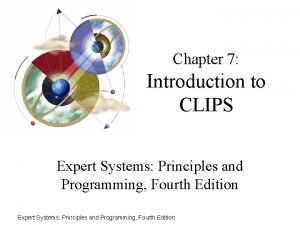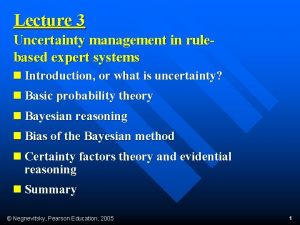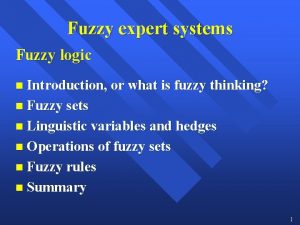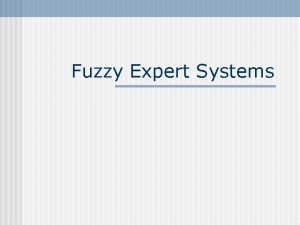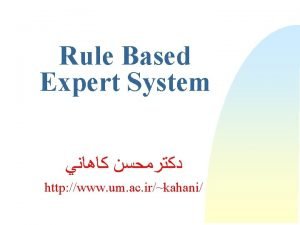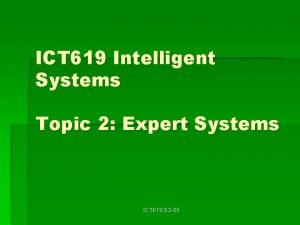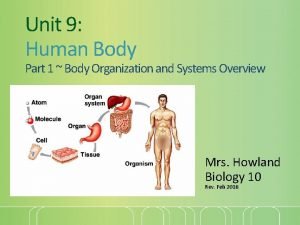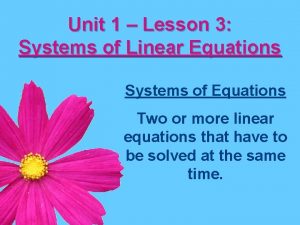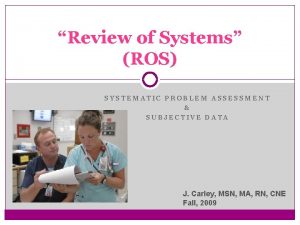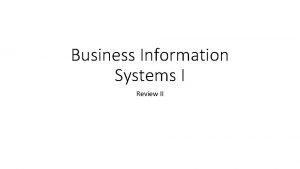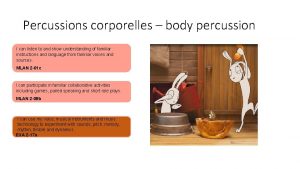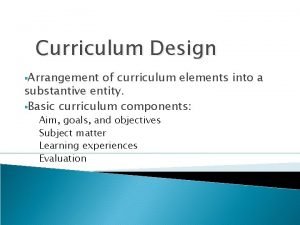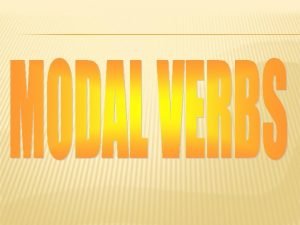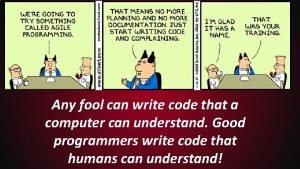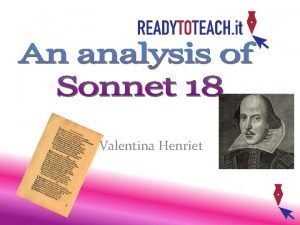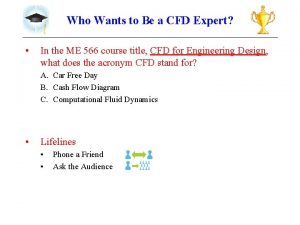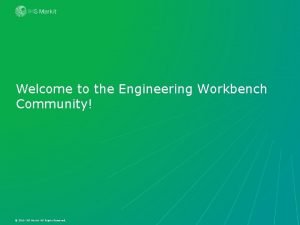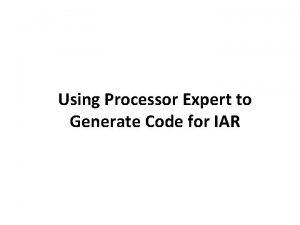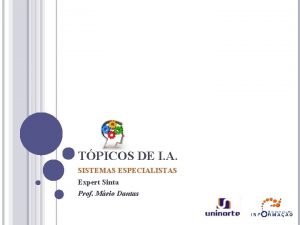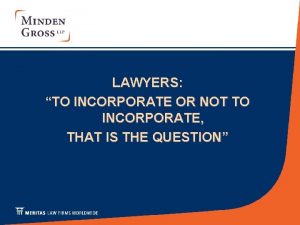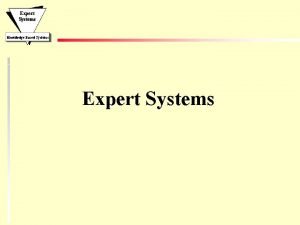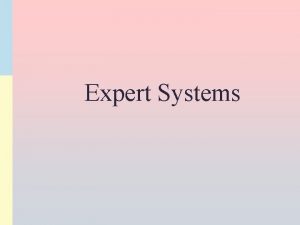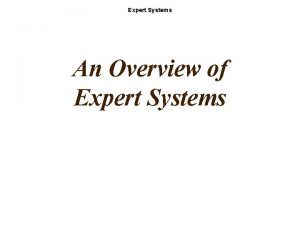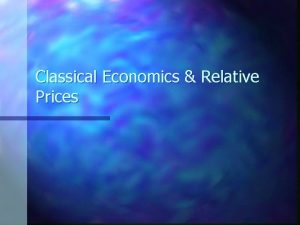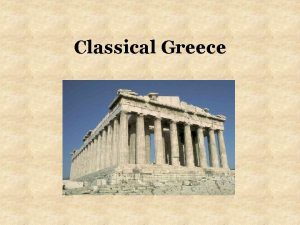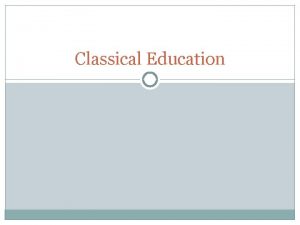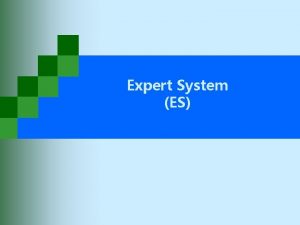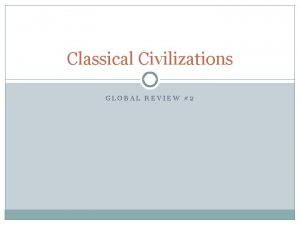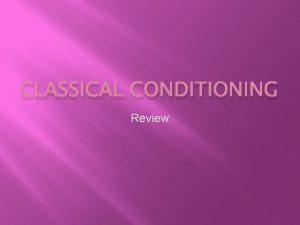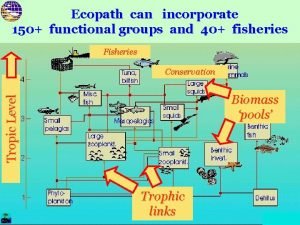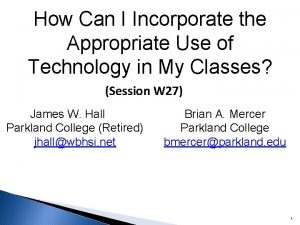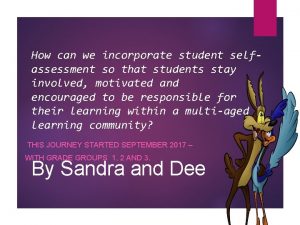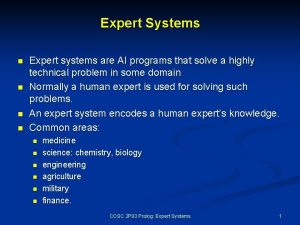EXPERT SYSTEMS Review Classical Expert Systems Can incorporate























































- Slides: 55

EXPERT SYSTEMS

Review – Classical Expert Systems • Can incorporate Neural, Genetic and Fuzzy Components

Many expert systems are based on rules

Expert Systems can perform many functions

• Rules can be fuzzy, quantum, modal, neural, Bayesian, etc. • Special inference methods may be used

Concepts of Knowledge Representation: INFERENCE

Inference versus Knowledge Representation

Forward chaining is data driven Backward chaining is goal driven


Elements of a rule

Example Chinook 47 Helicopter • System for testing and control

CONTROL SYSTEM with Failure Detection and Reconfiguration Executive control Controller Aircraft Dynamics ESTIMATOR SENSOR MEASUREMENTS Reconfiguration control signals RECONFIGURATION Failure Model Estimation Failure Diagnosis Failure Detection

Real-Time Implementation of Rule. Based Control System. Handelman and Stengel 1989


• High level control logic • High level reconfiguration logic

True/False signal is propagated bottom up


Failure Response • If then Else rules use measurement of specific ordered by them parameters • Pitch Rate sensor stuck 14 deg/s from nominal • Forward collective pitch control stuck 2. 5 cm from nominal (controls saturate at +/- 15 cm

• • • Inference can be fuzzy Inference can use neural net Inference can be based on search Inference can be probabilistic Inference can use higher-order-logic Any system, including a robot, can be made self-checking, fault – tolerant and reconfigurable Expert system based or not on fuzzy logic can be used for this task

Concepts of Knowledge Representation: DATA

Often used are: sets, schemes, frames and databases




Animal Decision Tree: Example Now we will illustrate some of these concepts on examples We will discuss forward chaining and backward chaining

Similar to “ 20 questions” • • Forward chaining is data driven Backward chaining is goal driven You see an animal, you ask what is this animal

You know animal name, you ask why this is the specified by name animal, what attributes testify to this decision. • Forward chaining is data driven • Backward chaining is goal driven Keep in mind, apply.

Animal Decision Tree Parameters Rules Programs



Rules call rules as procedures Rules are data driven: size, sound, neck, trunk.




PROGRAMMING LANGUAGES in Expert Systems




PROGRAMMING LANGUAGES versus RULES



Not for today’s lecture Example Principled Negotiation



Negotiation Tasks Completed? AND node Assessed Received Options? Options for Mutual Gain Exhausted ? Agent Database Updated? Option Implemented ? Response Sent? Proposal Implemented ? Proposed Option Accepted ? Proposal Assested ? Supervisor Agent Approved ? Best Option Proposed ? Approval Obtained? Approval Required?


Example Air Traffic Management Using Principled Negotiation (Wangermann and Stengel)





Conclusions • Expert Systems can be used in conjunction with Neural Nets, Evolutionary Algorithms and all other kinds of problem-solving/learning mechanisms. • Standard classical programming can be smoothly interfaced with Training and Evolving and Uncertainty based philosophies like in Evolutionary, Neural and Fuzzy methodologies.

Questions 1. 2. 3. Give examples of IF-THEN-ELSE rules for various types of Expert Systems. Give example how Expert System can be combined with a Neural Nets Give examples of Action Parameters and Premise Parameters for a Production Rule. Give examples how these parameters can be learned. Formulate a learning problem. 4. What are elements of a parameter, give examples. 5. What are the statuses of a rule. Give example for a simple robot based on rules. 6. Discuss forward chaining (reasoning) versus backward chaining (reasoning) on some practical math or robot based example. 7. Based on the given in class example of Chinook 47 Helicopter, design an expert system (rules) for a very simple Braitenberg-like Vehicle robot. 8. Read about our Animal example with forward and backward chaining. Explain the problem on your own example. 9. Explain the forward and backward chaining on a simple robot with camera that recognizes various obstacles in a room, such as a chair, a desk, a postument, etc. 10. Give examples of Frames and other knowledge representations for a simple robot. 11. Show example of an expert system based on Principled Negotiation. 12. Modify the Animal Recognition example to allow for fuzzy logic and predicates.


 To beat rapidly to incorporate air and increase volume
To beat rapidly to incorporate air and increase volume Sisteme incorporate
Sisteme incorporate Expert usability review
Expert usability review Legal expert systems
Legal expert systems Clips expert system example
Clips expert system example Uncertainty management in rule-based expert systems
Uncertainty management in rule-based expert systems Pxdes
Pxdes Fuzzy expert systems
Fuzzy expert systems Fuzzy expert systems
Fuzzy expert systems Rule-based expert systems
Rule-based expert systems Expert system in dss
Expert system in dss Expert systems ict
Expert systems ict What is expert system
What is expert system Expert systems: principles and programming, fourth edition
Expert systems: principles and programming, fourth edition Chapter review motion part a vocabulary review answer key
Chapter review motion part a vocabulary review answer key Ap gov final review
Ap gov final review Narrative review vs systematic review
Narrative review vs systematic review What is inclusion and exclusion criteria
What is inclusion and exclusion criteria Narrative review vs systematic review
Narrative review vs systematic review Human body structure
Human body structure Pltw human body systems final exam
Pltw human body systems final exam Hpi elements cheat sheet
Hpi elements cheat sheet Unit 1 lesson 3 review of linear systems
Unit 1 lesson 3 review of linear systems Review of systems subjective data
Review of systems subjective data Review of business information systems
Review of business information systems If you can imagine it you can achieve it
If you can imagine it you can achieve it You can tell harris about it just ____(easily) as i can
You can tell harris about it just ____(easily) as i can If you think you can you can poem
If you think you can you can poem If you cant measure it you cant improve it
If you cant measure it you cant improve it If you can't measure it you can't control it
If you can't measure it you can't control it Percussions corporelles
Percussions corporelles The arrangement of the elements of curriculum is called
The arrangement of the elements of curriculum is called You can tell harris about it just ____(easily) as i can
You can tell harris about it just ____(easily) as i can How to be more impressive 1+1=2
How to be more impressive 1+1=2 I can could speak english
I can could speak english Look at the pictures and complete with can or can't
Look at the pictures and complete with can or can't Going on a bear hunt lyrics dr jean
Going on a bear hunt lyrics dr jean Through you i can do anything
Through you i can do anything If you can measure it you can manage it
If you can measure it you can manage it Already can or can already
Already can or can already Any fool can write code that a computer can understand
Any fool can write code that a computer can understand Shall i compare thee to a summer's day figures of speech
Shall i compare thee to a summer's day figures of speech Was ist langfristiges fremdkapital
Was ist langfristiges fremdkapital Can modal verb
Can modal verb Can we make operating systems reliable and secure
Can we make operating systems reliable and secure Distributor ignition systems can be triggered by a
Distributor ignition systems can be triggered by a Decision support systems and intelligent systems
Decision support systems and intelligent systems Dicapine
Dicapine Embedded systems vs cyber physical systems
Embedded systems vs cyber physical systems Elegant systems
Elegant systems Cfd expert
Cfd expert Ihs ewb
Ihs ewb Dts gate motor wiring diagram
Dts gate motor wiring diagram Processor expert
Processor expert Mycin expert system architecture
Mycin expert system architecture Exsinta
Exsinta

